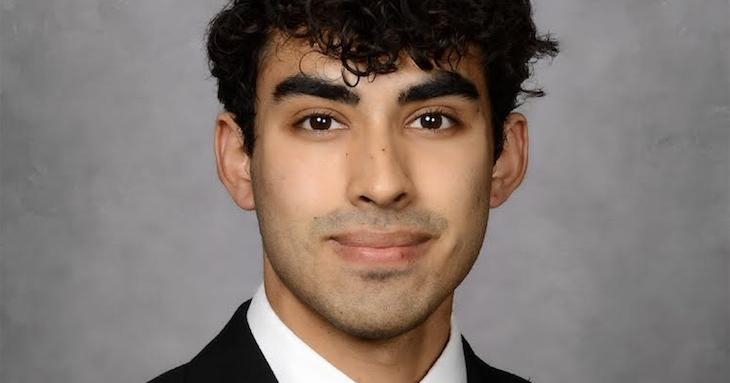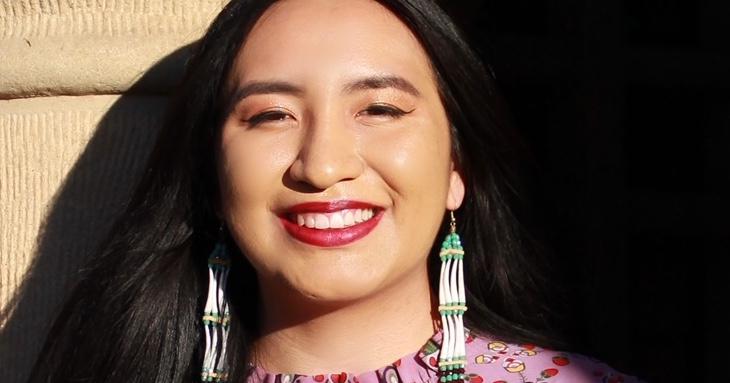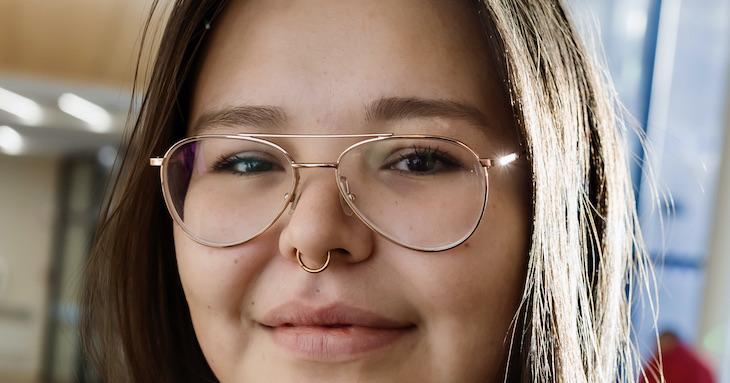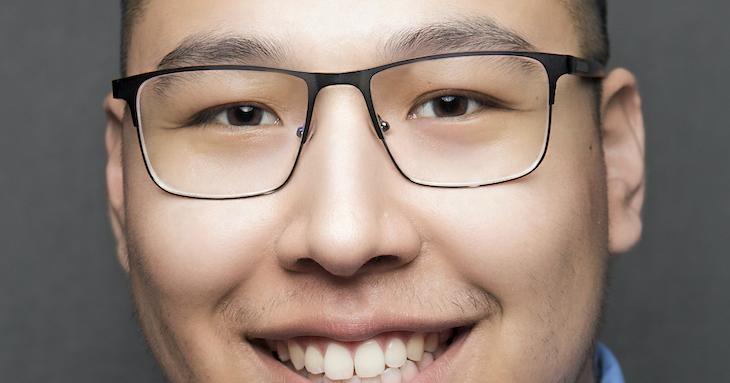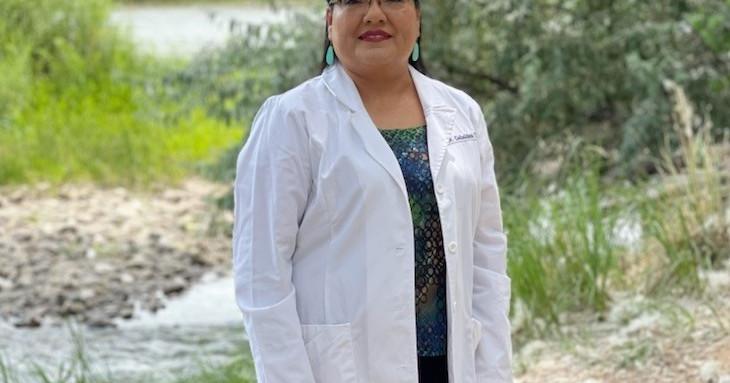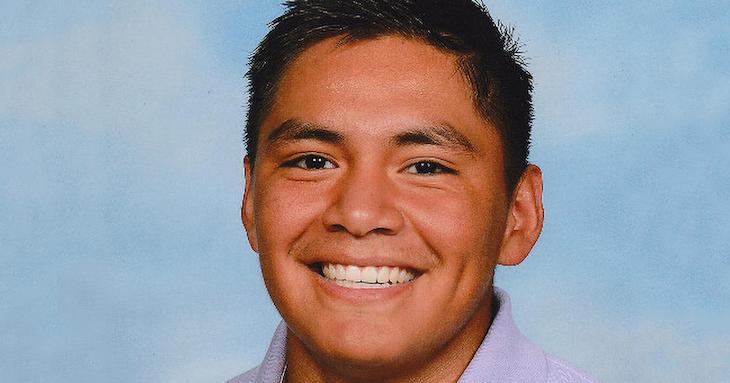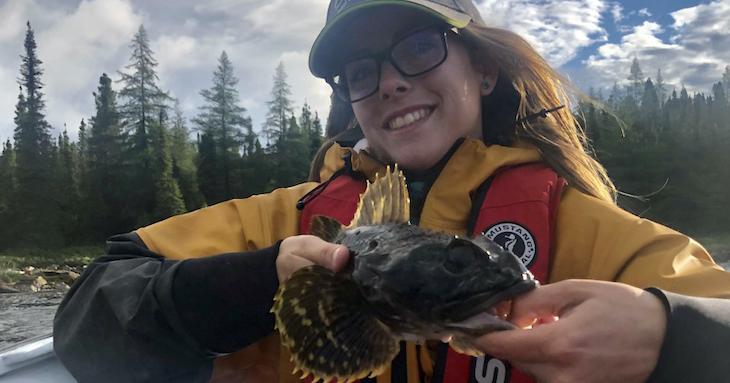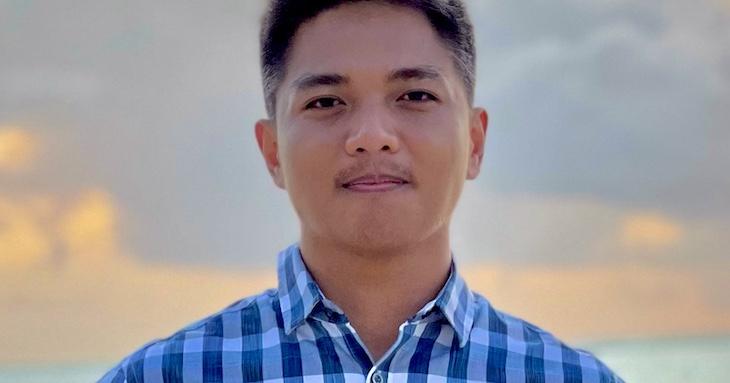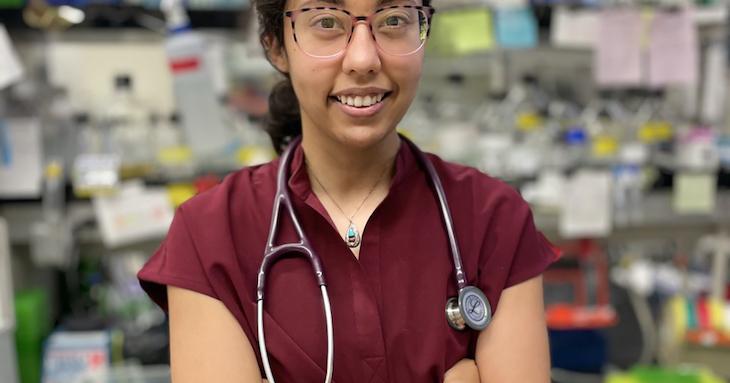-
Sebastian Diaz | Pasqua Yaqui | University of Arizona
In my family, there are currently three generations of engineers. I am poised to become the fourth. It may seem like I was always destined to be an engineer, but I spent years determining my career path, and even now I don’t feel that it’s set in stone. As a junior at the University of Arizona, I am working toward a degree in biomedical engineering. But I’m not stopping there. My ultimate goal is an MD/PhD, and I am well on my way.
-
Anpotowin Jensen | Oglala Lakota Nation | Stanford University
I grew up on the Pine Ridge Indian Reservation in South Dakota around traditional ceremonies, learning spirituality from my elders and science from my mother. My parents and grandparents prioritized the Lakota way of life and I always wanted to be like them. They are visionaries, and I’m thankful I was raised to see how innovative, grounded, and hopeful Lakota people are. My Ina (mother) was a single mother who raised my siblings and me while attending school and working full time before she met my Ate’ (stepdad) when I was two years old.
-
Julia Doucette-Garr | English River First Nation, Cree, and Métis | University of Saskatchewan
I started out at the University of Saskatchewan in biochemistry. For that major, physics was a prerequisite. Although I had taken physics in high school, it wasn’t my favorite subject. I liked biology and chemistry, but the reading in those courses became overwhelming. Physics, on the other hand, included lab work. We learn theories, and then in the lab, we see those theories in action. That helped me understand the material better, and I decided to switch my major to physics.
-
Michael Martinez | Yup’ik | University of Alaska Anchorage
Rare earth elements (REEs) are vital in medicine, electronics, renewable energy, and communications. But extracting REEs is environmentally stressful, with multiple potential supply chain problems. To address this, I created Arctic Biotech Oath (arcticbiotechoath.com), a start-up to develop sustainable biotechnology to extract REEs from mine ore and tailings using microorganisms in a circumneutral pH rather than highly acidic compounds common to traditional techniques.
-
Dr. Denise Gabaldon-Thronas | Ohkay Owingeh/Taos Pueblo | Naprapathic Medicine
Growing up in the Ohkay Owingeh Pueblo in New Mexico, Dr. Denise GabaldonThronas saw family members and friends struggling with a range of ailments from diabetes to cancer, and was determined to choose a career that would allow her to help them.
The first from her family to attend college, she focused on biochemistry at New Mexico State University, hoping to apply her degree in some aspect of health care. “I was initially interested in pharmaceuticals for curing disease,” she says, “but that was problematic because of our cultural beliefs in healing.”
-
Jacob Belin | Navajo Nation | Stellantis
Mechanical engineer Jacob Belin enjoys understanding how things work. He’s discovered he also likes being part of a team that looks for innovative ways to create new solutions. Even though he’s just 24, Belin is a propulsion systems engineer for Stellantis, a leading global automaker whose brands include Chrysler, Dodge, Fiat, Jeep, Opel, and Ram. So far, his path has included some trial and error and conscious effort — with a little help from AISES summer internships.
-
Mariah Gladstone | Cherokee Nation and Blackfeet Nation | Columbia University
Mariah Gladstone has found a recipe for success in her online cooking show Indigikitchen. Its name blends the words “Indigenous,” “digital,” and “kitchen,” and her weekly recipes, tips, and social media videos aim to reIndigenize the diets of Native Americans while tempting all viewers to opt for healthier diets. Her Facebook, Instagram, and YouTube posts have won her thousands of followers and interest from book agents and publishers.
-
Leah M. L. Creaser | Mi’kmaq—Acadia First Nation | Acadia University
Growing up, Leah Creaser spent much of her time with her friend Taylor adventuring behind their older brothers. Those excursions typically involved heading out on four-wheelers to some water and dropping a line to see if they could catch anything. While she didn’t always come home with dinner, Creaser did catch a love for fish. She is currently completing a bachelor’s degree in biology with a focus on fish science at Acadia University in Nova Scotia.
-
Joseph Lance Casila | Guamanian-Filipino | University of Pennsylvania
Completing one bachelor’s degree is impressive, but Joseph Lance Casila completed three in four and a half years while at the University of Guam — a BS each in math, chemistry, and biology. Casila is resourceful. He left high school wanting to pursue his interest in engineering, but the University of Guam didn’t have a full engineering program. So he created a course of study to meet his needs. “My initial plan was to major in math and chemistry at the University of Guam and use those courses to fulfill some requirements in an online engineering program I was looking into,” he says.
-
Kate Rahbari | Haliwa-Saponi | University of Illinois at Chicago
As a young girl, Kate Rahbari wasn’t sure she was smart enough to pursue an education in the sciences, let alone in medicine. “I was my own obstacle,” she says, explaining the “imposter syndrome” that gave rise to years of self-doubt. But today Rahbari has proven to herself — and the world — that she can reach ambitious goals. She now is well on her way to completing a joint MD/PhD program at the University of Illinois at Chicago (UIC).
The students and professionals profiled in Winds of Change share their journeys and some tips they’ve picked up along the way. Our AISES members come from diverse backgrounds and far-flung places, and not all take the traditional route to higher education. You will probably see some elements of your own story reflected in these profiles. With the continuing support of family, friends, and AISES, these students — and you — are on the path to success.


